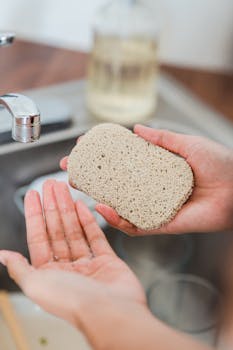Household Economy
Home Insulation Tips That Pay Off in Savings
Discover proven home insulation tips to save money and stay comfortable. Pinpoint energy leaks, choose the right materials, and follow expert strategies for real results in your home.
Advertisement
Few things feel better than walking inside and feeling that comfortable, stable temperature after a long day. People rarely notice great insulation, but anyone can feel it—and the energy bill proves its value. When you dial in home insulation tips, you maximize comfort and minimize what you pay each month.
Heating and cooling make up a huge portion of household energy spending. Even small improvements to your home’s insulation can make a noticeable difference in utility costs. Well-placed insulation pays for itself in savings, while also reducing drafts, noise, and wear on your system.
Explore these evidence-backed and realistic techniques to boost your home’s efficiency. Each section lays out concrete steps and useful scenarios you can try, so you can enjoy a cozier, more affordable home year-round.
Pinpointing the Real Cost: Where Air Slips Out (and Money Goes with It)
By identifying where your home loses heated or cooled air, you’ll know exactly where to focus for maximum return. Start with high-impact spots instead of spreading efforts thinly.
Tackle the main offenders first—attics, basements, and walls—since they usually contribute to the most energy loss. Approaching insulation strategically saves time and pays off faster than a whole-house overhaul.
Finding Hidden Air Leaks
Shut off fans and HVAC, then light an incense stick near doors, windows, and electrical outlets. If the smoke flickers or gets sucked away, a draft hides there. Mark these spots for sealing.
People standing near exterior walls who say, “Why does it feel colder here?” are usually standing by a hidden gap. Ask family members where they notice temperature swings to create a quick map of weak zones.
Tackling these hidden drafts first with a tube of caulk or weatherstripping makes a bigger difference than generic air-sealing sprays bought at random.
Evaluating Insulation Quality
If an attic floor looks exposed, patchy, or lets you see wood joists, insulation is low and heat escapes rapidly. Check crawl spaces for damp spots which signal insulation breakdown.
A contractor’s infrared camera pinpoints cold areas behind walls instantly. If you don’t have one, touch interior surfaces—chilly sections in winter suggest a weak insulation layer underneath.
Catch insulation falling from rim joists or above basement sill plates by looking for daylight peeking through. Note these areas as high-priority for air-sealing and upgrades.
| Home Area | Common Issue | Detection Method | Actionable Fix |
|---|---|---|---|
| Attic | Low/uneven insulation | Visible joists, cold floors | Install batts or blown-in insulation |
| Windows/Doors | Air leakage at edges | Incense smoke flicker, draft feel | Add weatherstripping; caulk frames |
| Basement/Sill Plates | Air leaks, pest entry | Daylight visible, cold spots | Spray foam gaps; rigid foam on rim joists |
| Walls | Missing or thin insulation | Touch test, thermal imaging | Dense-pack cellulose, injected foam |
| Outlets/Switches | Drafts through boxes | Incense test, hand feel | Seal with foam gaskets behind covers |
Sealing the Envelope: Quick Fixes with Long-Term Impact
Addressing areas where air sneaks in and out delivers immediate benefits. Focus on accessible spots where small changes add up to noticeable comfort and lower bills. Prioritize fixes that take less time than a long lunch break.
Small investments in caulks, foams, or gaskets can trim 10-20% from heating and cooling costs each year. The following steps deliver outsized returns, especially in older homes with original windows and doors.
Draft-Proofing Entry Points for Lasting Results
Apply weatherstripping around doors and windows, paying special attention to corners. Feel for leaks with the back of your hand on a breezy day. Replace worn-out door sweeps; align them so no sunlight peeks beneath the door.
Seal up baseboards and trim with paintable caulk. On a cold morning, touch along these edges—if it feels cooler, make that your starting point. Tackle the worst offenders in a single afternoon for instant gains.
- Install foam gaskets behind outlet and switch plates; stop draft flow in rooms, especially on outside walls. All you need is a screwdriver and 60 seconds per plate for a cumulative improvement.
- Caulk exterior cracks between siding and window trim; only use flexible, paintable caulks that can expand and contract with seasonal shifts. Check seams at least twice a year for recurring gaps.
- Add door sweeps to all exterior doors, ensuring no light passes underneath—especially garage-to-house doors, since garages get cold even when the house stays warm. Tight seals at this portal boost warmth.
- Use rope caulk for windows that won’t open in the winter. Press it into edges and remove easily come spring—handy in rentals or where permanent fixes aren’t possible.
- Spray expanding foam into larger wall or rim-joist gaps, especially where pipes and wires enter. Trim excess when dry. This method stops entire drafts cold and deters pests, too.
Each step plugs a unique pathway for energy loss. Choose projects based on where you literally feel air movement. Concentrate efforts on the most glaring leaks for bigger savings per dollar spent.
Layering Insulation in Targeted Zones
Add fiberglass batts or blown-in cellulose in attic and knee-wall spaces. Use measuring sticks or rulers to ensure a consistent layer of at least 12 inches, preventing thin spots that waste energy.
Secure rigid foam panels along cold basement or crawl space walls, cutting to fit between joists. Seal edges with spray foam to block unwanted airflow and moisture. This extra layer makes basement playrooms cozy.
- Upgrade garage ceilings beneath living spaces—heat escapes quickly into cold garages, making bedrooms above chilly. Use unfaced batts covered by fire-rated drywall to stay compliant and safe.
- Double up on attic hatch insulation using custom foam covers or batt layers to match the surrounding area depth. Leaky attic doors create unintentional chimneys, so treat them as a high-priority fix.
- Layer insulation beneath floors above crawl spaces for warmer morning walks in slippers. Use moisture-safe faced batts and support them with wire mesh, not strips alone, to keep them in place year-round.
- Boost wall performance by drilling small holes and injecting dense-pack cellulose; this method works best in unfinished basements and older walls without demolition.
- Add insulation to HVAC plenums and exposed ductwork, using foil-faced wrap. Leaky, cold ductwork wastes heated air and taxes your furnace unnecessarily, so a little wrap prevents big losses.
Combining air sealing with targeted insulation projects prevents waste and improves daily comfort. Every step translates to a tangible payback, especially visible when monthly bills drop and rooms feel more consistent.
Choosing Insulation Materials that Fit Your Situation
Selecting insulation types isn’t about just grabbing what’s on sale. Different products work better in certain areas, climates, or home layouts. Matching the right insulation to the right project ensures the best results and longer-lasting savings.
Insulation Types Explained with Everyday Context
Fiberglass batts cut easily and fit between studs, making them ideal for DIY wall, attic, or floor retrofits. Compact packaging saves garage space. Cellulose, a loose-fill made from recycled paper, quickly fills irregular spaces and is fire-retardant.
Spray foam delivers high R-values per inch and seals as it insulates, perfect for odd corners or rim joists—think of it as whipped cream for your draftiest spots. Rigid foam boards suit basements and exterior walls due to their water resistance and strength.
Mineral wool resists fire, mold, and sound transfer. Use it for interior walls if you want rooms quieter. Each product’s specialty shines in a unique zone—matching product to location multiplies insulation’s value.
Scenario: Mixing Materials for Whole-House Coverage
Consider a 1950s ranch home with some insulation, drafty attic access, and a cold basement. Try this step-by-step approach: place rolled batts in open attic spaces, then add blown cellulose over thin or missing areas.
Next, cut rigid foam for the rim joists in the basement, and seal them in place. Spot-seal wall penetrations using canned spray foam, especially around plumbing and electrical chases for a layered, customized solution.
Finish by checking wall outlets on exterior walls—install foam gaskets before replacing covers. With each step completed, you’ll notice a tighter, cozier feeling throughout the home.
Maintaining Insulation for Maximum Savings Through the Seasons
Predictable comfort and steady bills rely on insulation that stays intact over time. Regular checks and a seasonal care routine keep insulation performing as intended, year after year.
Look for compaction, settling, or obvious gaps, especially after harsh winters or high humidity summers. Proactively solving small problems keeps your home efficient and prevents bigger, more costly repairs later.
Seasonal Inspection Checklist
Start each fall by walking the attic with a flashlight, checking for thin or sagging spots. Make minor additions while temperatures are mild and before the cold really bites. Tidy crawl space insulation after spring rains to keep moisture in check.
In early spring, check windows and doors—seal cracks re-opened by winter shifts. Pay attention to humidity and indoor air quality; both hint at insulation or air sealing weak spots.
Every five years, inspect exterior caulking, especially on older wood siding, as material shrinks over time. Record inspection dates in a notebook near your fuse box to stay consistent and avoid missed years.
Addressing Indoor Air Quality While Insulating
As you seal up a home, watch for signs of trapped stale air, like persistent musty odors or condensation on windows. Use bath and kitchen exhaust fans, and open windows for an hour in mild weather as needed to flush the air.
If indoor allergies get worse after big insulation upgrades, consider an energy recovery ventilator (ERV). These systems trade indoor air for filtered outdoor fresh air with minimal heat loss.
Walk through after insulation work and see if doors shut more easily (indicates lower pressure imbalance), or if the home feels stuffy. Adjust mechanical ventilation to stabilize indoor comfort.
Upgrading Windows, Doors, and Other Weak Links
Improving windows and exterior doors can transform comfort and energy efficiency, especially in houses with single-pane glass or loose, dated frames. New windows shine, but strategic upgrades on old ones give similar benefits for much less money.
Reinforcing Original Windows and Doors
Apply shrink-fit clear plastic film to windows once each fall. Use a hairdryer to tighten the seal. Homeowners say “It’s like adding a second pane” when the draft stops. Remove in spring for full ventilation.
Install storm doors if your entry doors face harsh weather. Storm doors double the air space barrier for very little cost. For wood windows, use weatherstripping that compresses snugly when shut.
Check door thresholds every six months. Run your hand along the seam; if you feel cool air, tighten or replace hardware. Each adjustment can lift interior temperatures by several degrees in cold snaps.
Smart Uses of Curtains, Blinds, and Shades
Hang thermal-lined curtains on windows in bedrooms and living rooms. On winter nights, close them at sundown to trap heat. In summer, close south and west curtains on hot afternoons to prevent solar gain.
Peer behind blinds and shades with your hand—notice a wall of warm or cold air trapped at the window. This buffer layer adds comfort with one simple movement before leaving home each day.
Use Velcro or magnetic strips to snug curtain edges to the wall for a draft-tight fit. You’ll feel the quiet and warmth instantly, especially on windy nights.
Going the Extra Mile: Advanced Home Insulation Tips and Tactics
For those ready to go beyond the basics, advanced home insulation tips can pay exponential returns. Some projects take extra planning, but result in remarkable comfort and savings.
Focus here on multi-layered strategies or smart technology to keep ahead of future energy costs. These approaches aren’t for everyone, but can add real value to homes where comfort and efficiency lag behind.
Adding Exterior Insulation in Remodels or Retrofits
If you’re planning to re-side your home, add a layer of continuous rigid foam or mineral wool boards outside the sheathing before new siding goes up. This breaks “thermal bridging,” where heat flows through studs and leaks out.
This step adds notable energy gains without reducing interior space. Contractors say, “We see fewer ice dams and happier owners” after these projects wrap up. While this upgrade costs more upfront, the payoff lasts for decades.
Combine with upgraded house-wrap for moisture management and air tightness. Layering these solutions together is like giving your home a cozy, performance parka it wears all year.
Smart Thermostats and Zoning for Targeted Comfort
Install a programmable or smart thermostat to avoid blasting heat or AC when rooms sit empty. Set schedules for sleep, work, and travel times so the system only runs when needed.
For multi-story homes, consider HVAC zoning. This lets you heat or cool only lived-in areas. Zone dampers direct airflow where needed—a family with a finished attic might say, “We cut our bills in half once we zoned rooms.”
Always learn the interface on new thermostats thoroughly. Spend five minutes teaching every adult user, so you sidestep costly errors and get maximum value from your investment.
Finishing Strong: Getting the Most From Every Dollar Spent on Insulation
Smart insulation pays off for both finances and comfort. By focusing efforts where drafts, gaps, or missing insulation exist, you create a home that works with—not against—your HVAC system. Targeted, regular improvements deliver the fastest and biggest benefits.
Each home presents unique challenges, so tailor your actions to what you see, feel, and measure. Whenever you notice uneven room temperatures or a noisy furnace, revisit your home insulation tips and choose a quick win for a fast result.
View insulation as a series of small, manageable projects instead of a single overwhelming task. Every step makes a difference in lowering bills, strengthening comfort, and delivering a more peaceful living space year-round.
Frequently Asked Questions
1. How can I tell if my home needs more insulation?
Touch exterior walls and ceilings; they should never feel cold in winter or hot in summer. Look for visible gaps in the attic or drafts near outlets. If utility bills seem high for your home’s size, adding insulation can make an immediate impact.
2. Which home insulation tips save the most money?
Air sealing attics, basements, and exterior walls produces the largest savings. Target the biggest leaks with caulk and weatherstripping for a fast, cost-effective upgrade. Insulating attic hatches, rim joists, and crawl spaces comes next in priority for sustained comfort.
3. Can I add insulation without tearing up walls?
Absolutely. You can blow cellulose or spray foam into wall cavities through small holes between studs, and then simply patch the holes. This upgrade leaves interiors untouched and delivers a huge energy performance boost without costly renovations.
4. Is there a best time of year for insulation projects?
Early fall and late spring are ideal, as mild weather makes attics and crawl spaces accessible. Schedule major upgrades before extreme temperatures set in so insulation is ready to protect your comfort and your wallet all season long.
5. What’s the easiest insulation upgrade for beginners?
Sealing gaps around doors, windows, and outlets with foam gaskets or caulk gives instant feedback and quick comfort improvement. Upgrading attic insulation with blanket batts or adding a door sweep also provides high rewards for minimal time or money invested.





